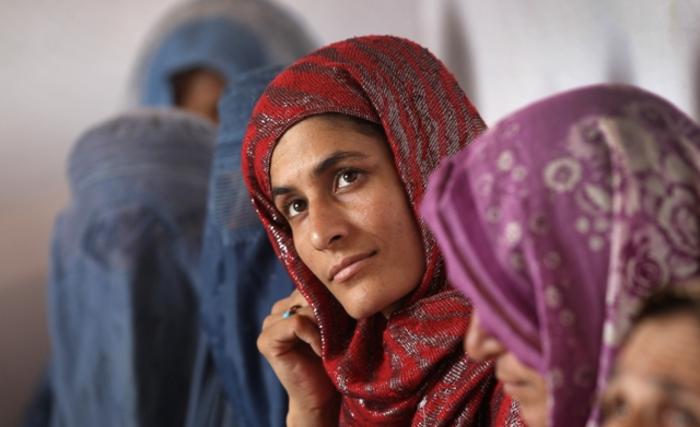Why Women In Afghanistan Are The Worst Affected By The War
Women in Afghanistan are the worst affected by the war.

Whilst human trafficking is a global crime, estimated to include 27 million victims worldwide, Afghanistan’s women and children are particularly vulnerable given the country’s economic, social and legal context.
Two decades of conflict, prolonged economic instability, a deteriorating security situation, and a culture that legitimises violence against women compounded by a legal system that fails to protect victims of sexual abuse, has led to Afghanistan emerging as a source, transit and destination country for human trafficking.
Women and children are particularly at risk, with forced marriages being widespread and poverty, with close to 40 percent of the country living below the poverty line, compelling upto one-third of Afghan children to work to augment family incomes. In addition to factors related to the source of potential victims, Afghanistan has conditions facilitating the trafficking of victims as it shares border that are difficult to monitor given the terrain and deteriorating security situation with six countries.
It is difficult to ascertain the number of individuals who are/have been victims of trafficking in Afghanistan given limited access to data because of cultural and social constraints wherein talking about trafficking of women for prostitution is considered taboo, the remoteness of far-flung areas in the country render access difficult, there is a lack of understanding of trafficking as a concept, and legal ramifications can prosecute a victim for sexual intercourse outside of marriage.
Given the difficulty to arrive at numbers, data obtained by the United Nations Assistance Mission in Afghanistan (UNAMA) concludes that the practices that violate the rights of women and girls are pervasive throughout Afghanistan, occurring in all ethnic communities and in rural as well as urban areas. The International Organisation for Migration (IOM) stated that trafficking victims referred to them for protection were predominantly female and trafficked for the purpose of sexual exploitation. This is in line with global trends, with the IOM ascertaining that 83 percent of victims of trafficking are women and girls.
Although trafficking itself is a cross-border activity, with internal trafficking representing only 19 percent of cases according to IOM’s Global Trafficking Database, in Afghanistan this trend is reversed as 60 percent were trafficked within the country and 40 percent taken across borders, most notably to Iran and Pakistan, according to US Department of State’s trafficking reports.
A report by Afghanistan’s Independent Human Rights Commission (AIHRC) noted that a majority of human trafficking victims in Afghanistan were girls who were married before reaching the legal age of marriage. 81 percent of the respondents of a survey conducted amongst trafficking victims by AIHRC in 20 of Afghanistan’s provinces said they were married before 18, and 50 percent were married when they were under 15. About 29 percent were forced into marriage after being raped, kidnapped or exposed to violence. There are numerous stories of girls in Afghanistan forced to marry their rapist, many of which follow a predictable cycle of the victim being forced into commercial sex work.
In addition to the factor of forced marriages, a majority of victims had been deprived of parental support. More than half the victim’s families had no stable source of income, while a third were trafficked after being tricked. Victims often speak of the fact that they have “no choice” given the economic deprivation, and a majority are forced into the trade by families - usually a husband or brother, or both.
15 year old Sahar Gull made headlines when the Baghlan province police found her imprisoned in her in-law’s ramshackled cellar. Sahar had been forced into marriage, and had been imprisoned, tortured and violently beaten by her husband and his family for refusing to work as a prostitute.
In a country that has become notorious for violence against women, there are many cases similar to Sahar’s, most of which will remain unknown and unheard of. Most perpetrators of violence against women are not prosecuted, and the AIHRC survey with victims of trafficking noted that only 17 percent of the respondents had reported the arrest of a perpetrator, while only 13 percent of those knew of their perpetrator being punished.
Reporting perpetrators is complicated given that conservative laws in Afghanistan may be used to prosecute the woman for having sex outside of marriage rather than protect her as victim of abuse who has been coerced into the trade. Human Rights Watch had released a report on women who were in Afghanistan’s prisons for “moral crimes,” of which many had been forced into prostitution by husbands and in-laws.
Afghanistan’s anti-woman reputation was in the spotlight recently, as it’s two chamber house parliament passed a bill that would have effectively denied women facing abuse legal protection. According to the proposed bill, relatives of the accused could not be questioned as witnesses. As a majority of abuse in Afghanistan takes place within the structure of the family, most often by family members - such as forced marriages resulting in a victim being forced into prostitution by her husband and in-laws - the bill, by ensuring that victim cannot testify against her family, denies her all legal protection. The bill created an international uproar, and outgoing Afghan President Hamid Karzai was compelled to order the amendment of the regressive bill following the backlash.
The bill was a reminder of the continuing deprivation of women in Afghanistan, perpetuated by the context of poverty; war, conflict and displacement; patriarchal social structures; and legal conventions legitimising abuse.



